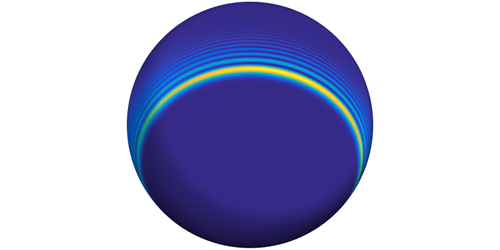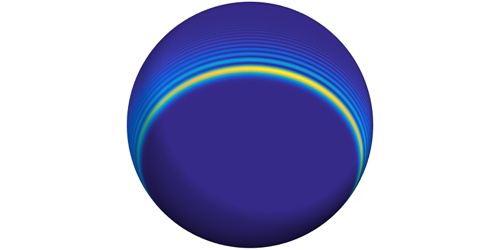A Doubly Curved Light Wave
Light typically travels in a straight line, but physicists have found several ways to make light beams curve. A new experiment adds an extra twist by combining two separate light-bending phenomena: one involving the curved space known from general relativity, the other based on shape-preserving accelerating wave packets developed in optics. Mordechai Segev and his colleagues from the Technion – Israel Institute of Technology are the first to experimentally observe an accelerating beam in curved space.
Making light curve has become a hot topic recently. For some scientists, the interest is in emulating general relativity through the confinement of light in a curved geometry, such as an undulating waveguide or round piece of a glass. For others, the aim is to create a curving light beam for manipulating particles, shaping plasma filaments, or micromachining materials. In this latter case, the beam as a whole (defined by its center of mass) doesn’t curve, but interference effects between different lobes of the beam make the brightest lobe follow a curving path, as if it were accelerating under some force.
In their experiment, Segev and colleagues created a curved-space landscape by cutting the top off of a 6-cm-wide light bulb. They then directed a specifically shaped accelerating beam into this hemispheric glass waveguide. The team imaged the path of the light, and—as expected from their simulations—they found that the brightest lobe of the beam bent away from the shortest-distance path, which is the trajectory light would normally take in the curved glass. The researchers believe this type of experiment will offer new opportunities for emulating general relativity phenomena in optical settings and also open new possibilities for controlling light in nonplanar 3D settings.
This research is published in Physical Review X.
–Michael Schirber
Michael Schirber is a Corresponding Editor for Physics based in Lyon, France.





